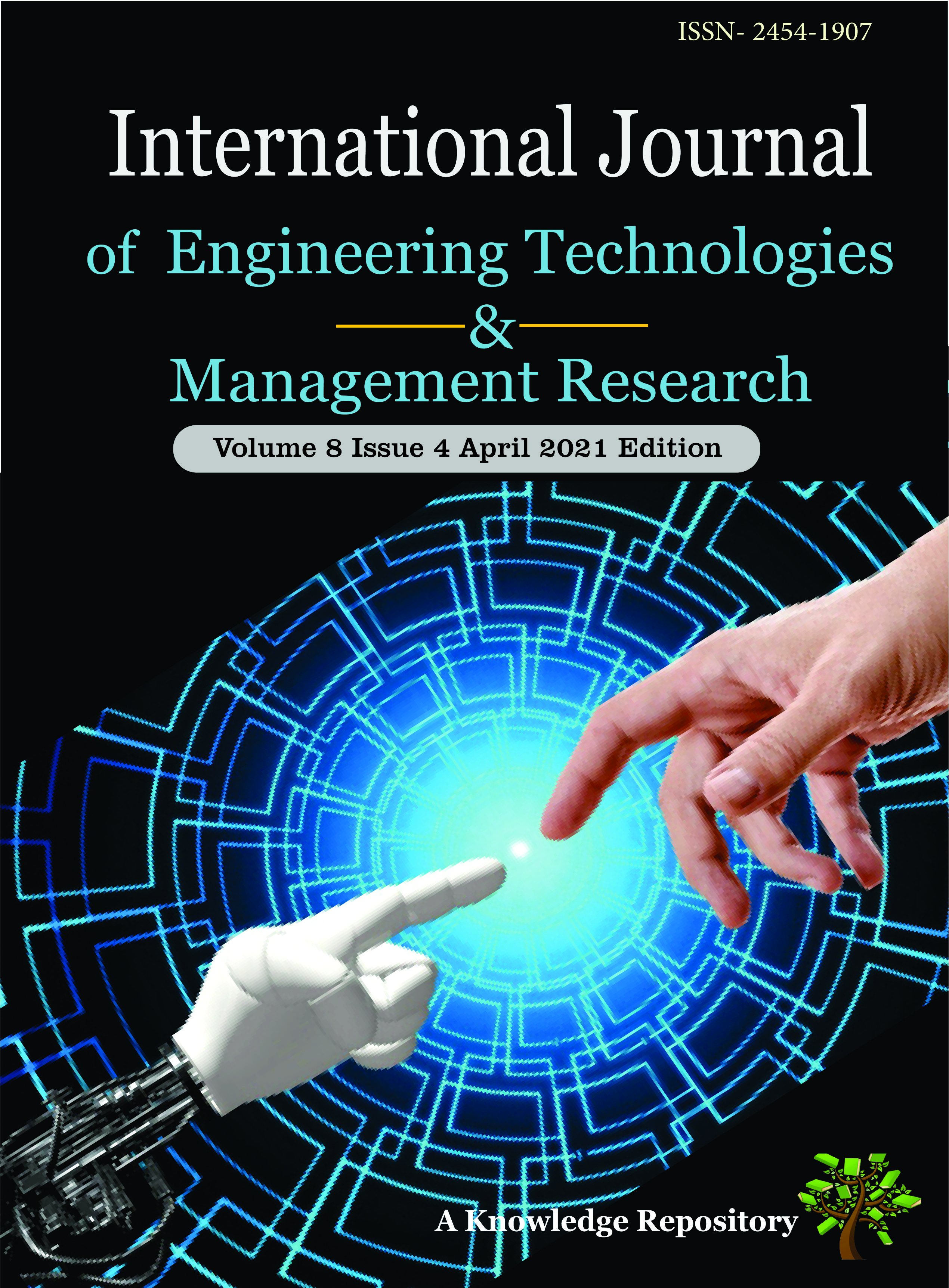CHARACTERIZATION OF LOW DENSITY POLYETHYLENE WASTE FILLED WITH PALM KERNEL SHELL
DOI:
https://doi.org/10.29121/ijetmr.v8.i4.2021.918Keywords:
Low Density Polyethylene, Palm Kernel Shell, Composite, Waste, Tensile Strength, HardnessAbstract
All over the world, polyethylene wastes has been found littered on the streets of most communities and states. Palm kernel shell (agricultural waste) constitutes dirt and environmental pollution. The aim of this research was to study the potentials of palm kernel shell (PKS) filler as reinforcement for low density polyethylene (LDPE) waste. LDPE-Palm kernel shell composites of varying ratio (100:0, 90:10, 80:20, 70:30, 60:40, 50:50) of LDPE to PKS respectively were produced using the compression moulding technique. Mechanical properties such as water absorption, hardness, young’s modulus and tensile strength of the composites were found to increase with increasing PKS loading. The results showed that composites containing 40% of PKS gave the highest tensile strength corresponding to 18.42MPa. The results also indicated that the composites with 50% filler loading gave the highest hardness of 84.25A and water absorption rate which stood at 3.1%. The elongation at break was found to decrease with increasing filler content. The scanning electron micrograph (SEM) obtained revealed that the composites with 20% and 50% palm kernel shell had voids and surface cracks.
Downloads
References
Akindapo H. and Yusuf B. Palm Oil and its Global Supply and Demand Prospect. Oil palm industry. Journal of oil research, 2017, Vol. 2:1-10.
Al-kaabi k., Al-khanbashi A. and Hammami A. Date Palm Fiber as Polymeric Matrix Reinforcement. DPF/Polyester Composite Properties. Polymer compos, 2005, Vol. 26:604-613. DOI: https://doi.org/10.1002/pc.20130
Averous L. and Le Digabel F. B. Properties of Biocomposites based on Lignocellulosic Fillers. Carbohydrate polymers, 2006, 66:480-493. DOI: https://doi.org/10.1016/j.carbpol.2006.04.004
Barkar M. A., Natarajan V. D., Kalam A. and Northayatis K. Mechanical Properties of Oil Palm Fibre Reinforced Epoxy for building Short Span Bridge. Proceedings of the 13th International Conference on Engineering Materials and Structure, 2007, 103-106. DOI: https://doi.org/10.1007/978-1-4020-6239-1_47
Bledzki A. K. and Gassan J. Composites Reinforced with Cellulose Based Fibers. Progress in Polymer Science. 1999, 24, 221-274.
Danyadi L., Moczo J. and Pukanszky B. Effect of Various Surface Modifications of Wood Flour on the Properties of PP/Wood Composites. Composites: 2009, 41: 199-206. DOI: https://doi.org/10.1016/j.compositesa.2009.10.008
Josmin P., Sang K. and Sabu T. Advances in Polymer Composite. Journal of polymer engineering, 2012, Vol. 11:2.
Lunnace S., Ali R. and Nicolaise L. E. Processing Condition on Dimensions of Sisal Bers in Thermoplastic Biodegradable Composites. Journal of Applied Polymer Science, 2001, 7c (6). DOI: https://doi.org/10.1002/1097-4628(20010207)79:6<1084::AID-APP120>3.0.CO;2-J
Pendolino K., Salmah H., Romishuani A. and Akmal H. Properties of Low Density Polyethylene/Palm Kernel Shell Composite. Effect of polyethylene co-acrylic acid. Thermoplastic composite materials, 2013, Vol. 26:2-15.
Salmah H., Lim B. Y. and Teh P. L. Melt Rheological Behaviour and Thermal Properties of Low Density Polyethylene Palm Kernel Shell Composites. Effect of polyethylene acrylic acid. International journal of polymeric material, 2012, 61(14), 109-110. DOI: https://doi.org/10.1080/00914037.2011.617336
Vazquez A. M., Beltran M, and Villaricenci O. Biodegradation of Eco-toxicity of Polyethylene Films Containing Pro-oxidant Additive. Journal of polymer and the environment, 2016, Vol. 3:32-37.
Wypych G. Handbook of Material Weathering, 3rd Edition, Toronto, Chem Tee publishing, 2003.
Published
How to Cite
Issue
Section
License
License and Copyright Agreement
In submitting the manuscript to the journal, the authors certify that:
- They are authorized by their co-authors to enter into these arrangements.
- The work described has not been formally published before, except in the form of an abstract or as part of a published lecture, review, thesis, or overlay journal.
- That it is not under consideration for publication elsewhere.
- That its release has been approved by all the author(s) and by the responsible authorities – tacitly or explicitly – of the institutes where the work has been carried out.
- They secure the right to reproduce any material that has already been published or copyrighted elsewhere.
- They agree to the following license and copyright agreement.
Copyright
Authors who publish with International Journal of Engineering Technologies and Management Research agree to the following terms:
- Authors retain copyright and grant the journal right of first publication with the work simultaneously licensed under a Creative Commons Attribution License (CC BY-SA 4.0) that allows others to share the work with an acknowledgment of the work's authorship and initial publication in this journal.
- Authors can enter into separate, additional contractual arrangements for the non-exclusive distribution of the journal's published version of the work (e.g., post it to an institutional repository or edit it in a book), with an acknowledgment of its initial publication in this journal.
- Authors are permitted and encouraged to post their work online (e.g., in institutional repositories or on their website) before and during the submission process, as it can lead to productive exchanges, as well as earlier and greater citation of published work.
For More info, please visit CopyRight Section






























